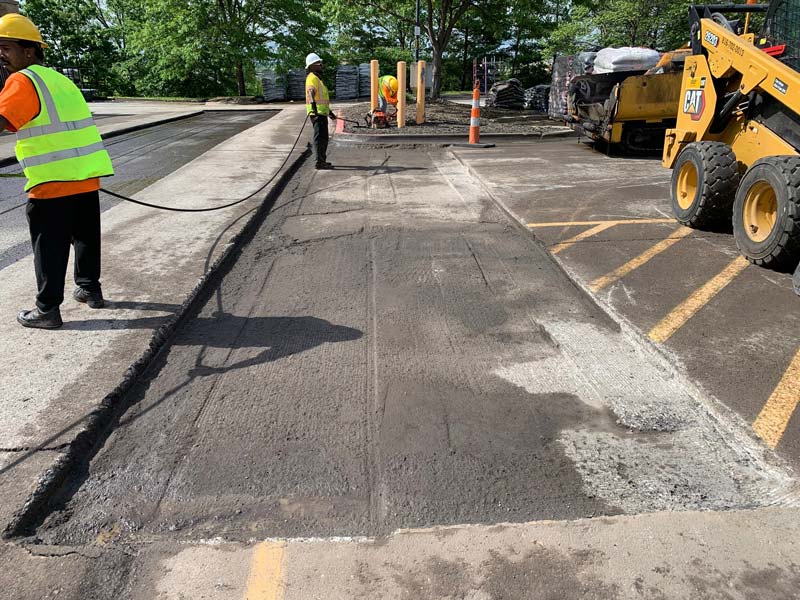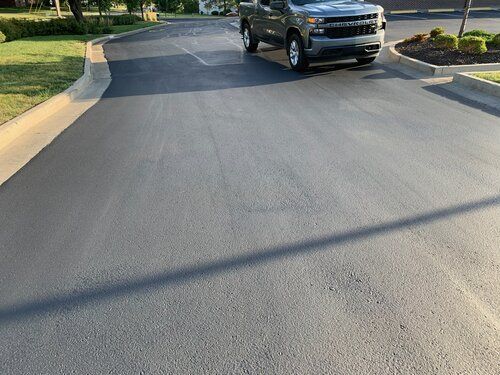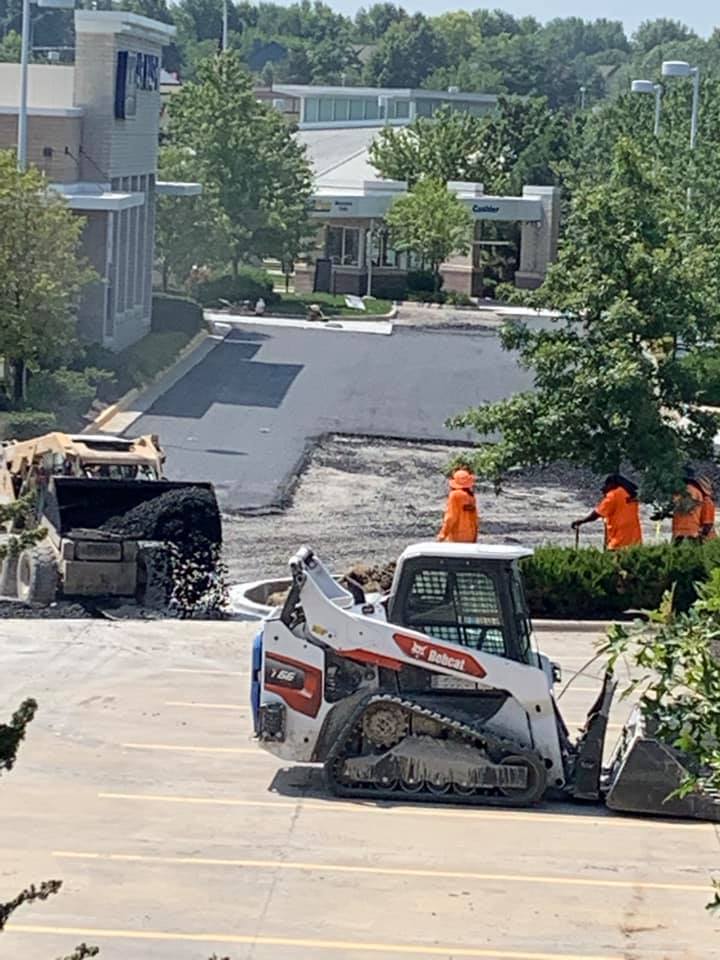Introduction
In the realm of construction and civil engineering, achieving longevity in pavement systems is a key objective. One often overlooked aspect that significantly influences the lifespan of pavements—be it for residential driveways or commercial parking lots—is proper drainage. The Role of Proper Drainage in Enhancing Pavement Longevity cannot be overstated, as inadequate drainage can lead to a myriad of issues including water pooling, erosion, and structural failure over time. This comprehensive article aims to delve deep into the significance of effective drainage systems, how they contribute to the durability of various types of asphalt pavements, and practical strategies for ensuring optimal drainage solutions.
Understanding Pavement Types and Their Needs
Types of Pavements
Pavements come in various forms, each requiring specific considerations for drainage:
Asphalt Pavement- Commonly used for its flexibility and cost-effectiveness. Requires designed drainage to prevent water accumulation.
- Known for its strength but can crack if not properly drained. Effective slope design is crucial.
- Allows water infiltration and reduces runoff. Best suited for areas with high rainfall.
The Importance of Drainage
Proper drainage minimizes water damage, which can lead to:
- Cracking Potholes Structural failure Reduced lifespan
By understanding these needs, asphalt companies can implement proper drainage strategies tailored to each pavement type.
The Role of Proper Drainage in Enhancing Pavement Longevity
When considering the role of proper drainage in enhancing pavement longevity, it becomes clear that water management is crucial for both new installations and existing surfaces. An effective drainage system directs rainwater away from the pavement structure, preventing pooling that may lead to asphalt degradation or premature failure.
Designing Effective Drainage Systems
To optimize drainage performance, several factors must be considered during the design phase:
Site Assessment- Evaluate natural topography and soil type.
- Ensure a minimum slope (typically 1-2%) away from structures.
- Incorporate ditches or swales designed to carry excess water away.
- Use these features to collect and redirect stormwater effectively.
- Periodically check drains for clogs or blockages to ensure functionality.
Case Studies: Successful Drainage Implementations
Residential Asphalt Driveways
For homeowners looking at asphalt driveway installation, integrating a proper drain helps extend life expectancy. In one case study in suburban Denver, an asphalt driveway was installed with a slight incline leading towards a French drain system; this reduced pooling by 75%, consequently extending the lifespan significantly compared to untreated driveways.
Commercial Parking Lots
In commercial settings, parking lot paving companies frequently employ advanced techniques such as permeable paving combined with traditional asphalt methods to manage high volumes of rainwater efficiently. A notable example is a shopping center that decreased maintenance costs due to lower occurrences of flooding-related repairs through proper channeling systems.
How Improper Drainage Affects Asphalt Pavements
Common Issues Due to Poor Drainage
Water Accumulation- Leads to softening of the subgrade material beneath the pavement.
- Water infiltration can create voids underneath asphalt layers causing cracks or potholes.
- In colder climates, trapped moisture expands when frozen, causing significant surface damage during thaw cycles.
- Regular repairs become necessary when foundational problems arise from poor drainage practices.
Statistics on Asphalt Durability
Research indicates that properly drained pavements have asphalt paving https://www.platinumpavingkc.com/ https://www.platinumpavingkc.com/contact a reduced need for maintenance by up to 50%. This emphasizes the financial benefits alongside improved safety conditions on roadways and parking lots.
Key Strategies for Effective Asphalt Driveway Installation
1. Planning Phase: Assessing Drainage Needs
Before beginning any asphalt driveway installation project, consider conducting a thorough site evaluation focusing on existing drainage patterns and potential problem areas such as low spots where water may pool.
2. Choosing Quality Materials
Utilizing high-quality hot mix asphalt during installation contributes not only to aesthetic appeal but also enhances durability against water damage when paired with an effective drainage system.
3. Utilizing Advanced Techniques
- Implementing techniques like milling and overlay services ensures existing pavements are restored correctly without compromising underlying structures—vital when considering long-term durability through enhanced water management strategies.
The Cost Implications: Asphalt Paving Cost vs Long-Term Savings
While initial costs associated with implementing efficient drainage systems may seem steep (e.g., $10-$20 per linear foot), these expenses pale compared to long-term maintenance costs associated with poor pavement performance due to inadequate drainage solutions—often exceeding thousands in repair bills over time.
Comparative Costs Breakdown Table
| Item | Estimated Cost | |--------------------------------|--------------------| | Basic Asphalt Driveway | $2-$6 per sq ft | | Advanced Drainage Solutions | $10-$20 per linear ft | | Regular Sealcoating | $0.15-$0.25 per sq ft | | Crack Sealing | $1-$3 per linear ft |
Regular Maintenance Practices for Enhanced Longevity
An effective maintenance routine plays an essential role in prolonging pavement life:
1. Sealcoating Services
Regular sealcoating every 2-3 years protects your investment against UV damage while improving aesthetics—a vital aspect when considering properties or businesses looking at curb appeal enhancement through well-maintained surfaces!
2. Crack Sealing Techniques
Implementing preventative crack sealing helps prevent larger issues down the line caused by moisture infiltration; doing so reduces overall repair frequency significantly over time!
Frequently Asked Questions (FAQs)
Q1: How does improper drainage impact my asphalt driveway?
A1: Poorly managed water accumulation can lead directly toward cracking and substrate deterioration over time—ultimately increasing repair needs while reducing overall lifespan!
Q2: What are some common signs that my pavement requires better drainage?
A2: Look out for visible pooling after rainstorms along with cracks forming around edges; these indicate insufficient slopes or inadequate draining options present within your project’s design!
Q3: How often should I perform sealcoating on my driveway?
A3: It’s recommended every two years depending on traffic levels; regular applications help protect against wear & tear from weather elements effectively!
Q4: Are there ADA-compliant alternatives available?

Q5: What’s involved in preparing an old driveway before resurfacing?

Q6: Can I DIY sealcoat my driveway?
A6: While possible if done correctly using quality materials & following best practice guidelines; professional assistance often yields better results ensuring longevity without risking premature failure due lack application experience!

Conclusion
In conclusion, understanding the role of proper drainage in enhancing pavement longevity is vital for anyone involved in paving projects—whether residential or commercial endeavors alike! By investing time upfront into adequate planning coupled with strategic execution around these principles leads ultimately toward greater returns down line—not just financially but also regarding user safety yielding improved experiences overall! With increased awareness coupled alongside actionable insights presented here today; stakeholders across all sectors now possess knowledge necessary empower informed decision-making processes going forward thereby optimizing performance throughout entire lifecycles involved within this industry sphere!